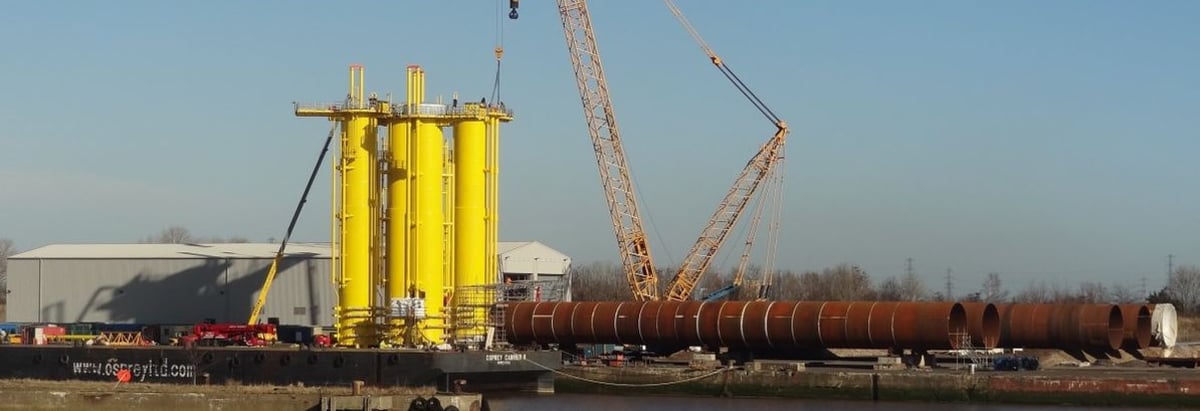- Norway
- /
- Energy Services
- /
- OB:SUBC
With An ROE Of 4.83%, Has Subsea 7 SA's (OB:SUBC) Management Done Well?

The content of this article will benefit those of you who are starting to educate yourself about investing in the stock market and want to learn about Return on Equity using a real-life example.
Subsea 7 SA (OB:SUBC) performed in line with its oil and gas equipment and services industry on the basis of its ROE – producing a return of 4.83% relative to the peer average of 6.34% over the past 12 months. But what is more interesting is whether SUBC can sustain or improve on this level of return. Today I will look at how components such as financial leverage can influence ROE which may impact the sustainability of SUBC's returns.
See our latest analysis for Subsea 7
Peeling the layers of ROE – trisecting a company’s profitability
Return on Equity (ROE) weighs Subsea 7’s profit against the level of its shareholders’ equity. An ROE of 4.83% implies NOK0.048 returned on every NOK1 invested, so the higher the return, the better. If investors diversify their portfolio by industry, they may want to maximise their return in the Oil and Gas Equipment and Services sector by investing in the highest returning stock. However, this can be misleading as each firm has different costs of equity and debt levels i.e. the more debt Subsea 7 has, the higher ROE is pumped up in the short term, at the expense of long term interest payment burden.
Return on Equity = Net Profit ÷ Shareholders Equity
ROE is assessed against cost of equity, which is measured using the Capital Asset Pricing Model (CAPM) – but let’s not dive into the details of that today. For now, let’s just look at the cost of equity number for Subsea 7, which is 8.49%. Given a discrepancy of -3.66% between return and cost, this indicated that Subsea 7 may be paying more for its capital than what it’s generating in return. ROE can be broken down into three different ratios: net profit margin, asset turnover, and financial leverage. This is called the Dupont Formula:
Dupont Formula
ROE = profit margin × asset turnover × financial leverage
ROE = (annual net profit ÷ sales) × (sales ÷ assets) × (assets ÷ shareholders’ equity)
ROE = annual net profit ÷ shareholders’ equity

The first component is profit margin, which measures how much of sales is retained after the company pays for all its expenses. Asset turnover reveals how much revenue can be generated from Subsea 7’s asset base. The most interesting ratio, and reflective of sustainability of its ROE, is financial leverage. We can determine if Subsea 7’s ROE is inflated by borrowing high levels of debt. Generally, a balanced capital structure means its returns will be sustainable over the long run. We can examine this by looking at Subsea 7’s debt-to-equity ratio. The most recent ratio is 4.60%, which is sensible and indicates Subsea 7 has not taken on too much leverage. Thus, we can conclude its below-average ROE may be a result of low debt, and Subsea 7 still has room to increase leverage and grow future returns.

Next Steps:
ROE is a simple yet informative ratio, illustrating the various components that each measure the quality of the overall stock. Subsea 7’s below-industry ROE is disappointing, furthermore, its returns were not even high enough to cover its own cost of equity. Although, its appropriate level of leverage means investors can be more confident in the sustainability of Subsea 7’s return with a possible increase should the company decide to increase its debt levels. Although ROE can be a useful metric, it is only a small part of diligent research.
For Subsea 7, I've put together three fundamental factors you should look at:
- Financial Health: Does it have a healthy balance sheet? Take a look at our free balance sheet analysis with six simple checks on key factors like leverage and risk.
- Valuation: What is Subsea 7 worth today? Is the stock undervalued, even when its growth outlook is factored into its intrinsic value? The intrinsic value infographic in our free research report helps visualize whether Subsea 7 is currently mispriced by the market.
- Other High-Growth Alternatives : Are there other high-growth stocks you could be holding instead of Subsea 7? Explore our interactive list of stocks with large growth potential to get an idea of what else is out there you may be missing!
To help readers see pass the short term volatility of the financial market, we aim to bring you a long-term focused research analysis purely driven by fundamental data. Note that our analysis does not factor in the latest price sensitive company announcements.
The author is an independent contributor and at the time of publication had no position in the stocks mentioned. For errors that warrant correction please contact the editor at editorial-team@simplywallst.com.
Simply Wall St analyst Simply Wall St and Simply Wall St have no position in any of the companies mentioned. This article is general in nature. We provide commentary based on historical data and analyst forecasts only using an unbiased methodology and our articles are not intended to be financial advice. It does not constitute a recommendation to buy or sell any stock and does not take account of your objectives, or your financial situation. We aim to bring you long-term focused analysis driven by fundamental data. Note that our analysis may not factor in the latest price-sensitive company announcements or qualitative material.
About OB:SUBC
Subsea 7
Subsea 7 S.A. delivers offshore projects and services for the energy industry worldwide.
Solid track record with excellent balance sheet.
Similar Companies
Market Insights
Community Narratives



